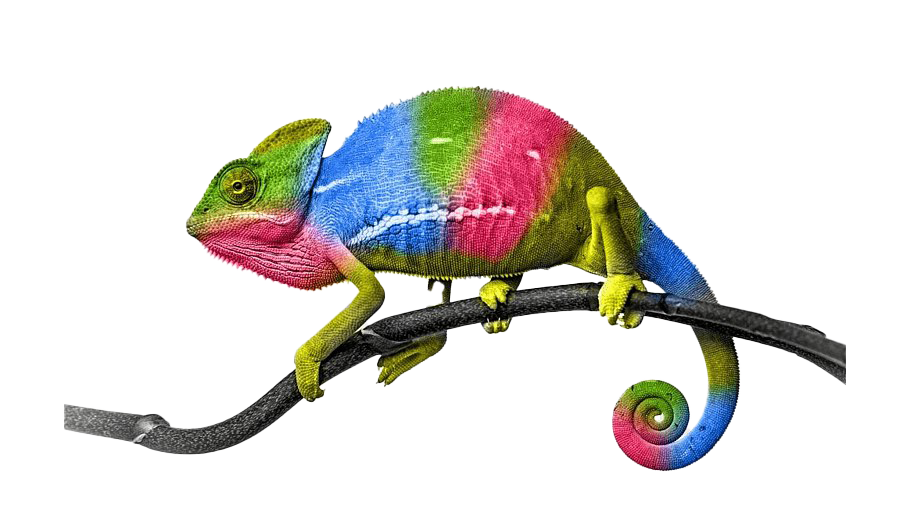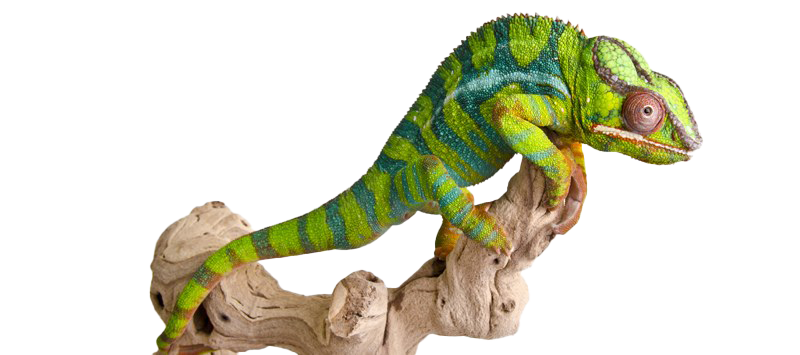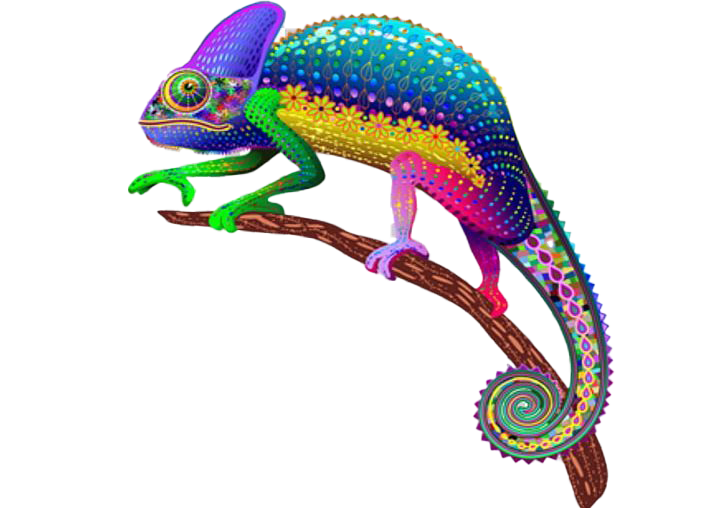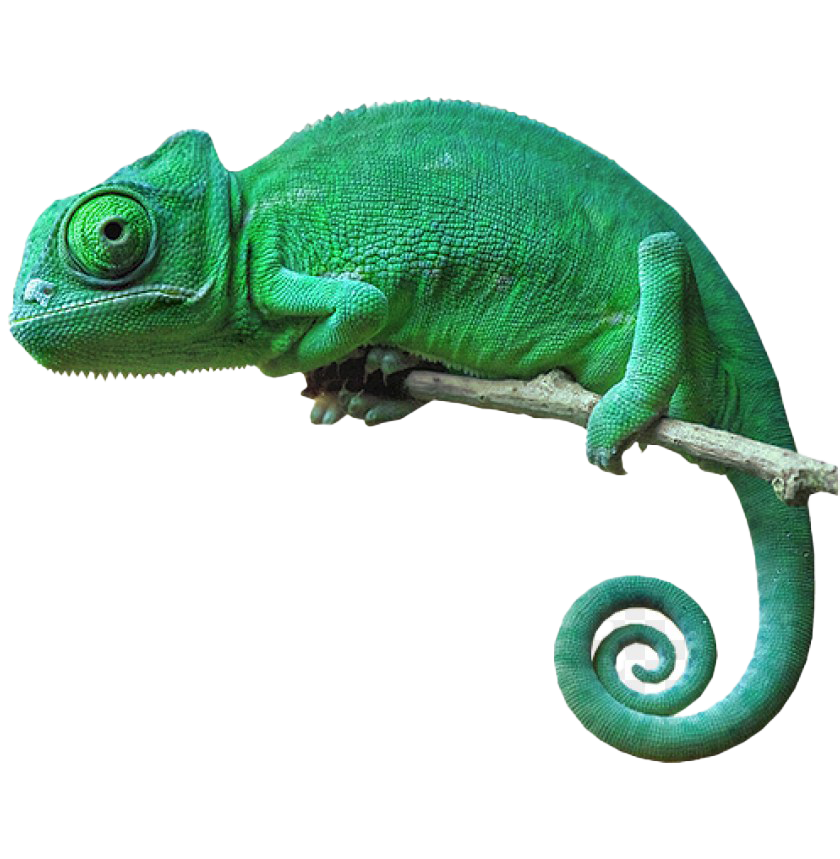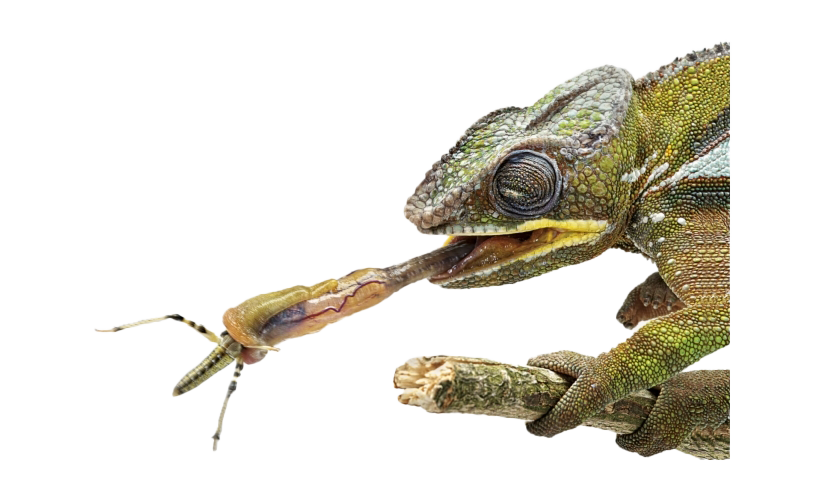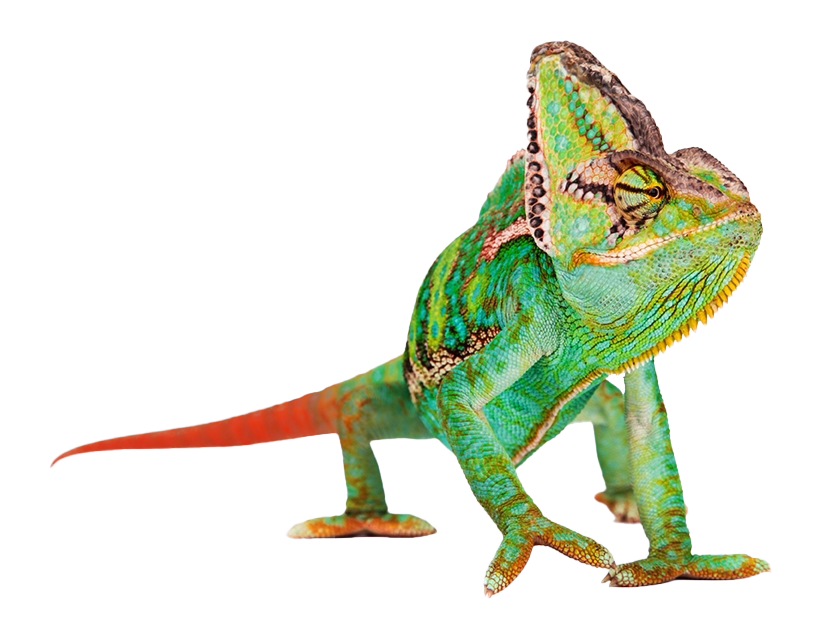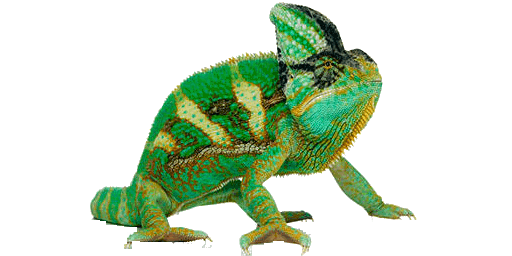Download free Chameleon PNG Transparent Images, vectors, and clipart for personal or non-commercial projects. Ideal for any design or creative projects. To view the full PNG image in its original resolution, simply click on any of the thumbnails below.
Chameleons are lizards with many amazing features. There are several different types of chameleons. According to the current classification, there are more than 160 different types of chameleons. Most chameleons come from Africa, and a small island off the coast of Africa called Madagascar. There are also several chameleons native to Europe, such as Spain and Portugal, as well as some parts of Asia. They were also represented in Hawaii. They tend to live in warm climates from rain forests to deserts. Chameleons are truly unique creatures. Thanks to evolution, they have developed many interesting features.
One of these features is the ability to move the eyes independently of each other. One eye can look near or behind them, while the other eye looks in front of them. This feature gives chameleons the ability to see around them 360 degrees. Contrary to the belief, chameleons do not change their color to harmonize with their background. They are naturally disguised due to their colors. Usually green to fit treetops.
However, they change color by lightening or darkening the skin, but this is based on temperature regulation or emotional changes such as stress or fright. Chameleons are arboreal, which means they stay on trees for most of their lives. They have strong legs that hold like vices. Chameleons are didactyl. They have five toes on each foot, but they are tied together in a group of two and a group of three. This makes their legs look like tongs. Each finger has a sharp claw.
They also use their long tail to help with balance and climbing. Chameleons have a rather unusual language. Their tongues are made up of bones, muscles, and sinew. Most chameleons can stick out their tongue one and a half times their body size. They use this function for food. They can shoot out their tongue in just a split second to catch their food. The tip of their tongue is also very sticky. Chameleons vary greatly in size.
The smallest chameleon is about 1.3 inches, and the largest is 27 inches. Many chameleons show some time ornaments of the head or face, such as nasal protrusions or horn-shaped projections or large crests on the tops of the head. Like snakes, they do not have a middle or outer ear. This may indicate that chameleons may be deaf. Most chameleons are oviparous (egg laying), and other ovules (live birth). After approximately 3–6 weeks, the egg-laying chameleons will descend from the branches and dig a hole to lay eggs. The eggs will hatch from 4 to 12 months, depending on the species. Ovoviviparous chameleons will give birth from 5 to 6 months.
